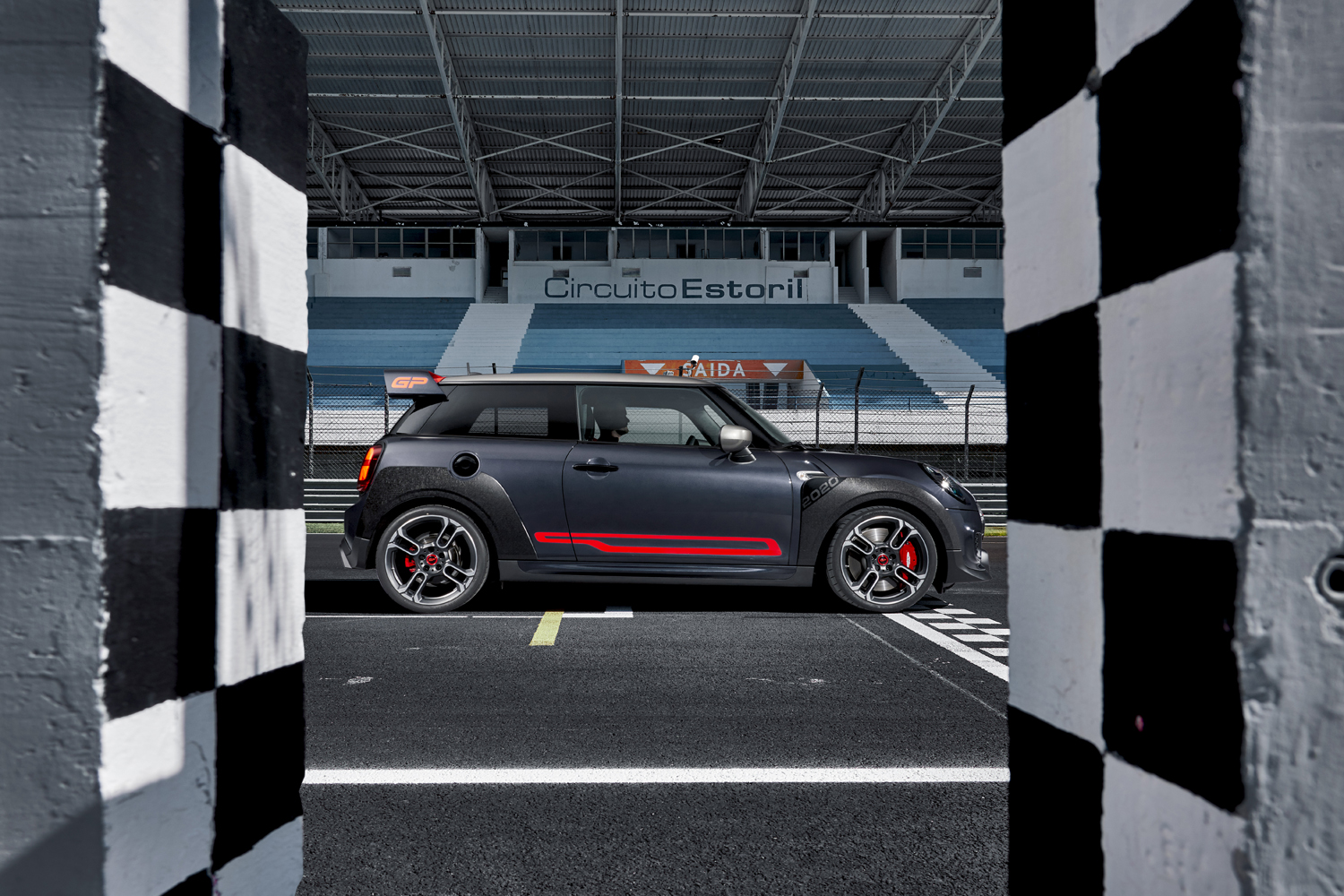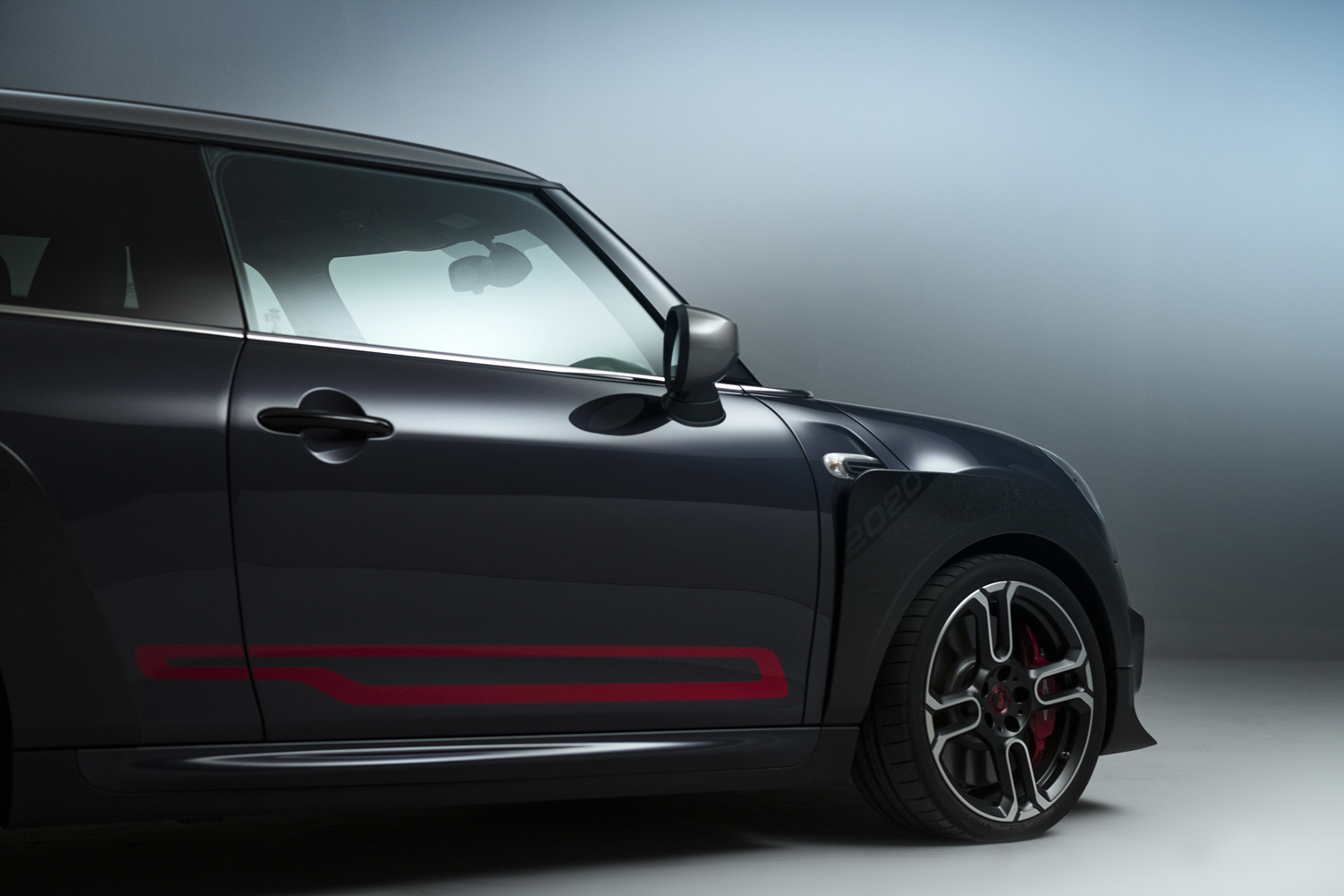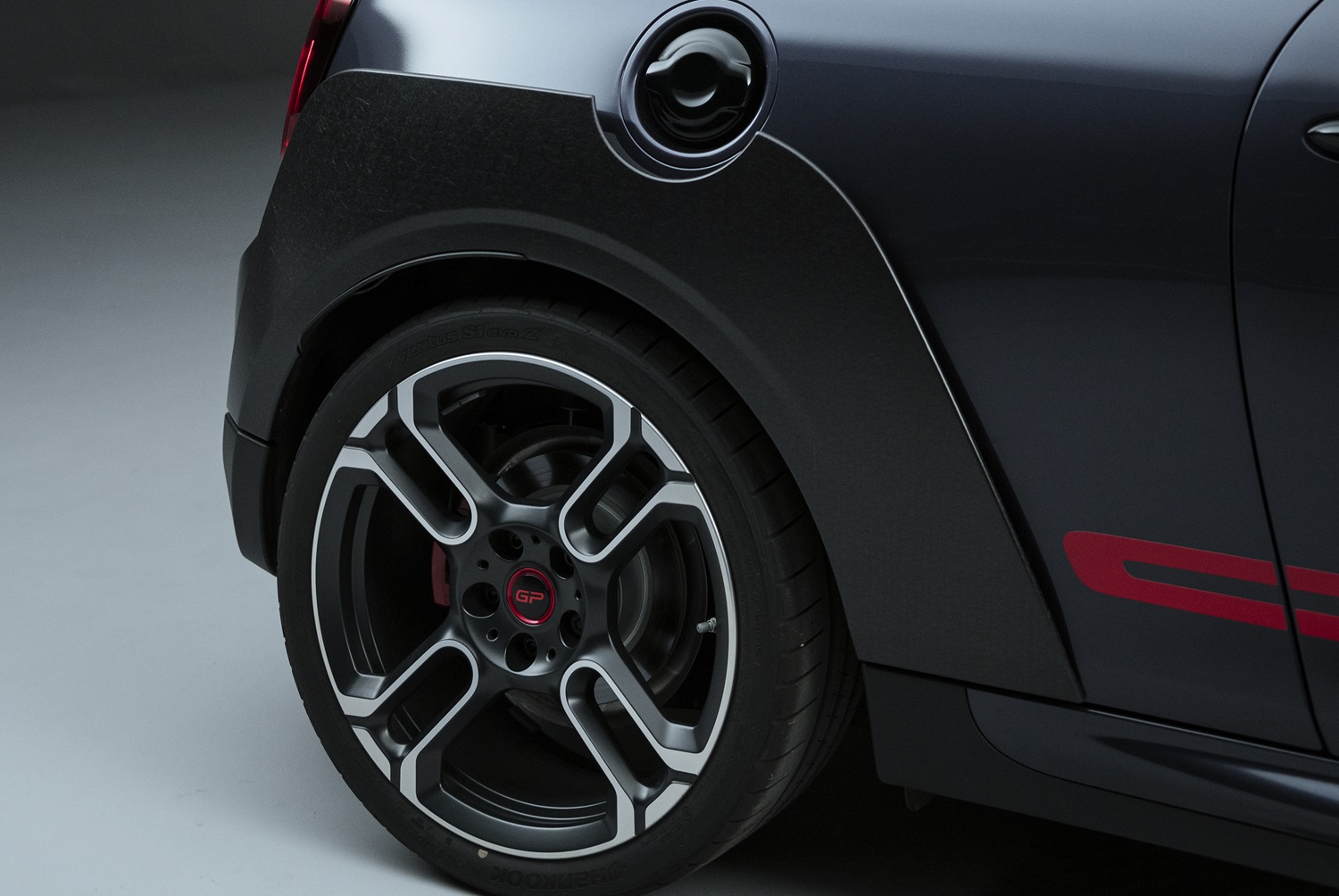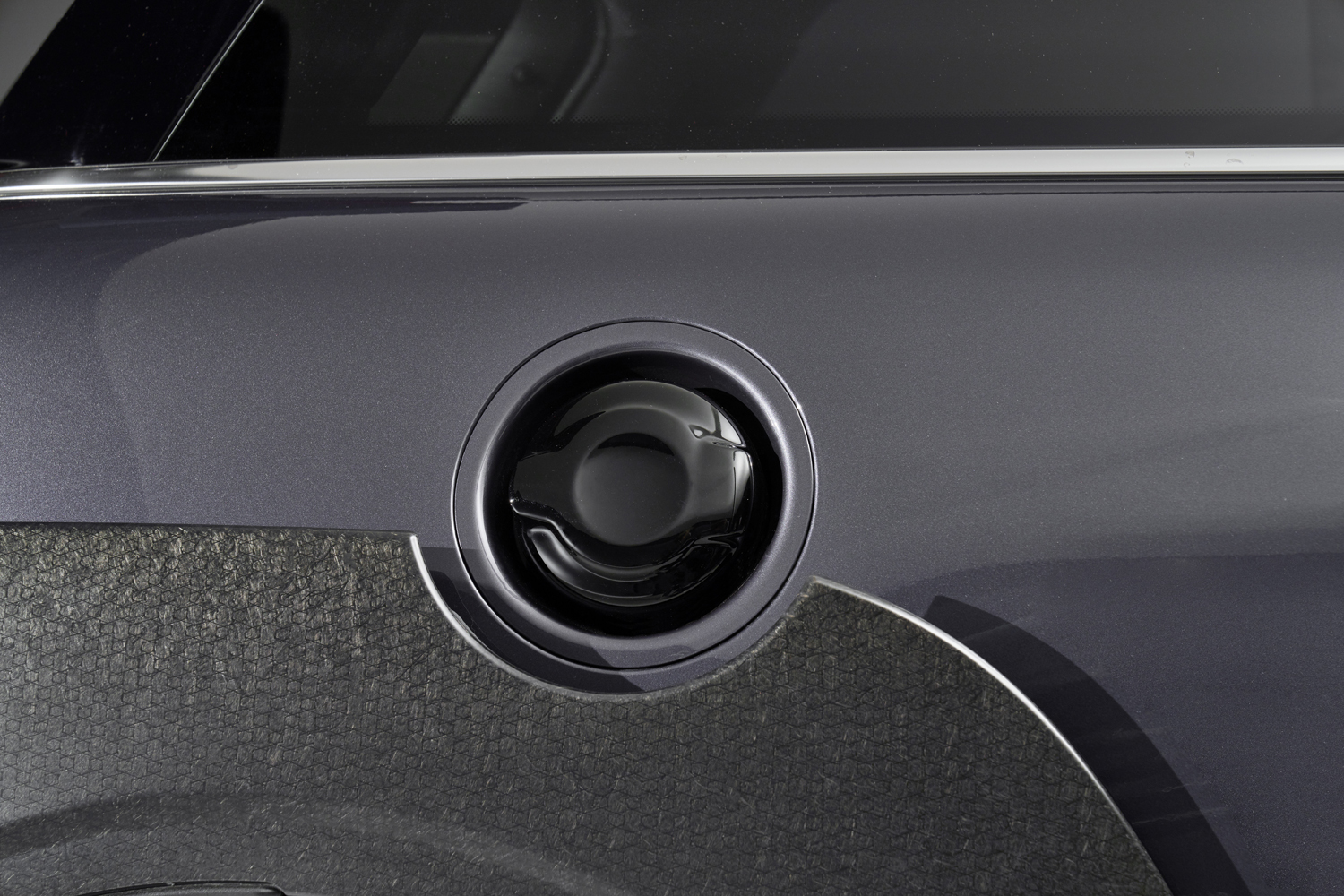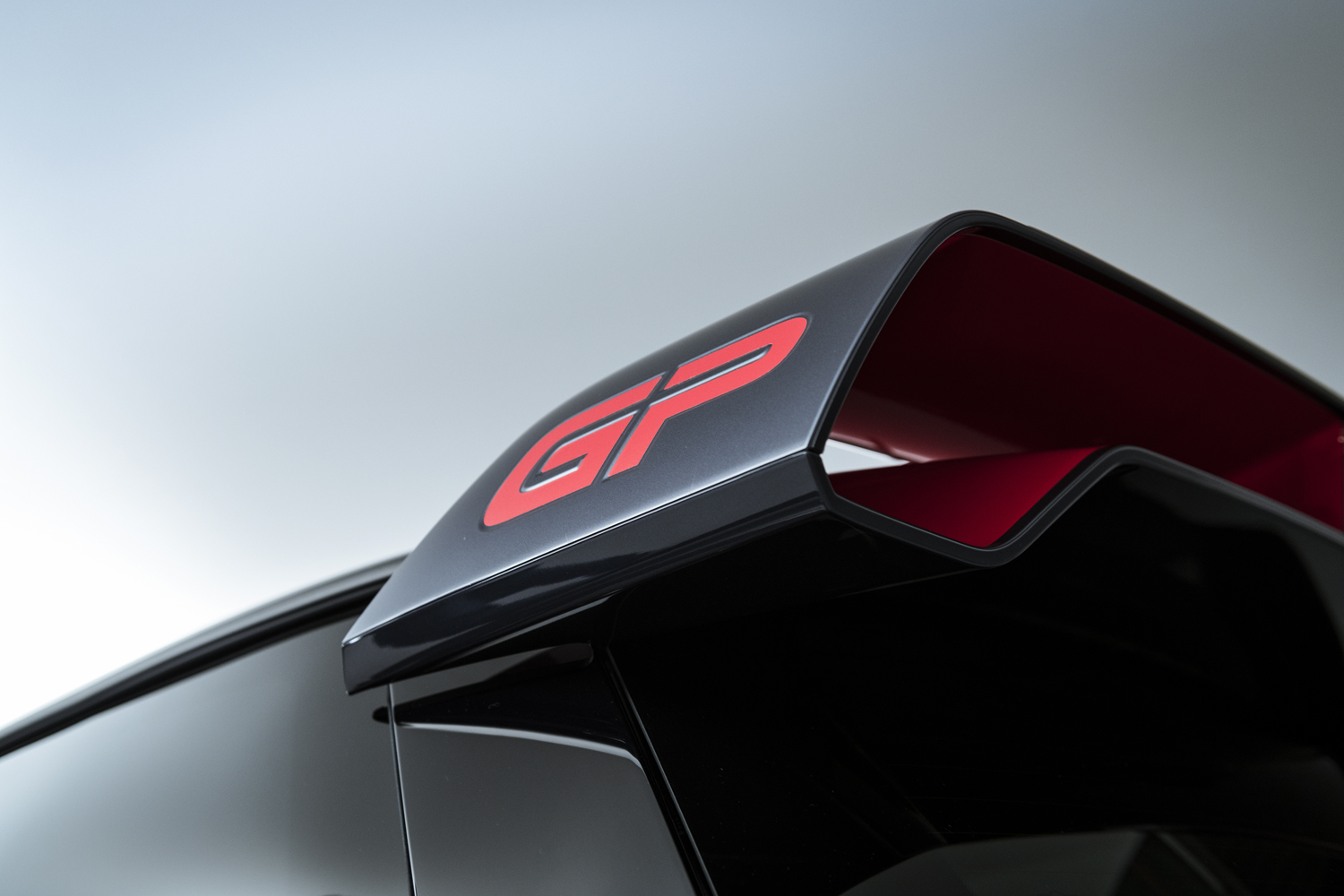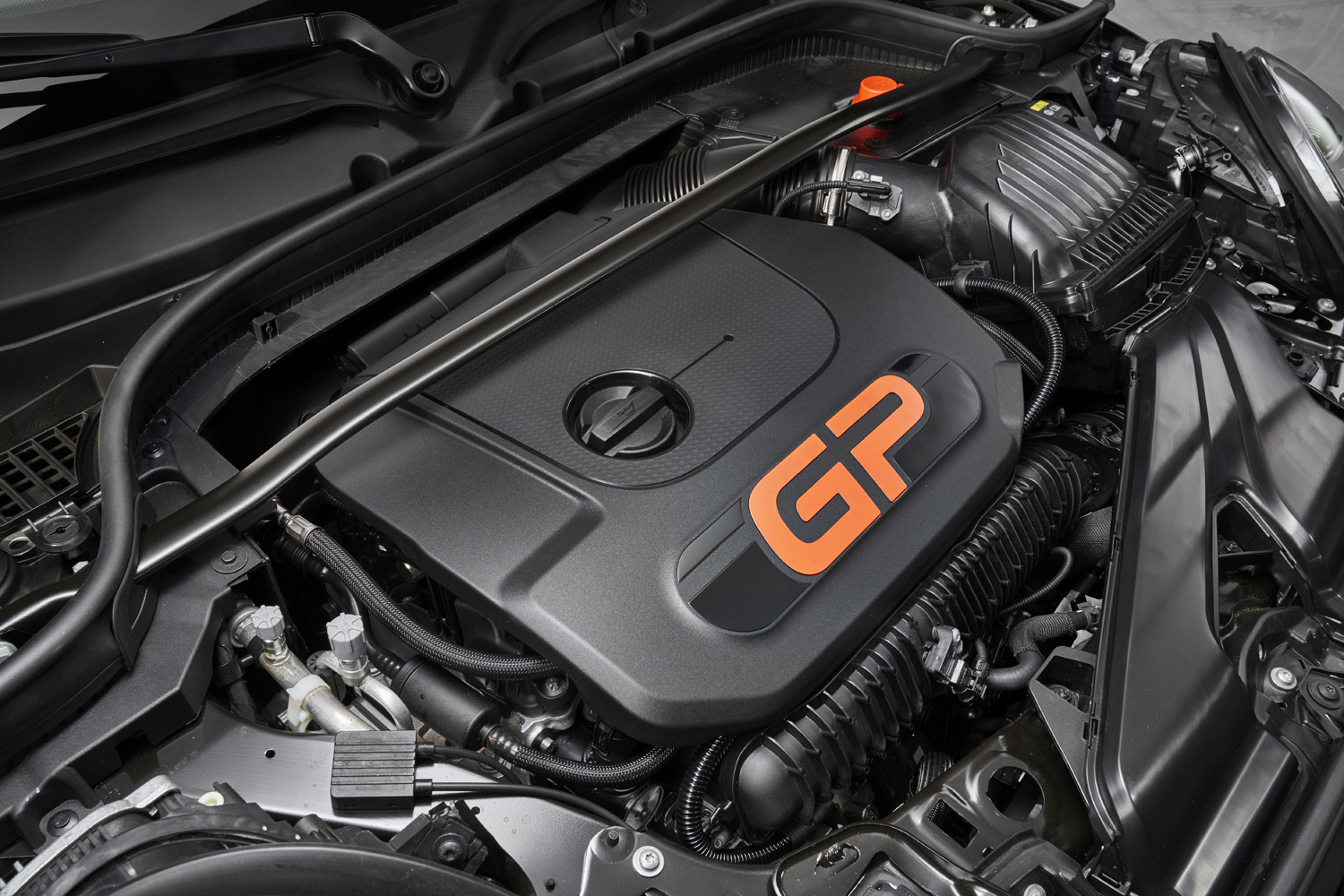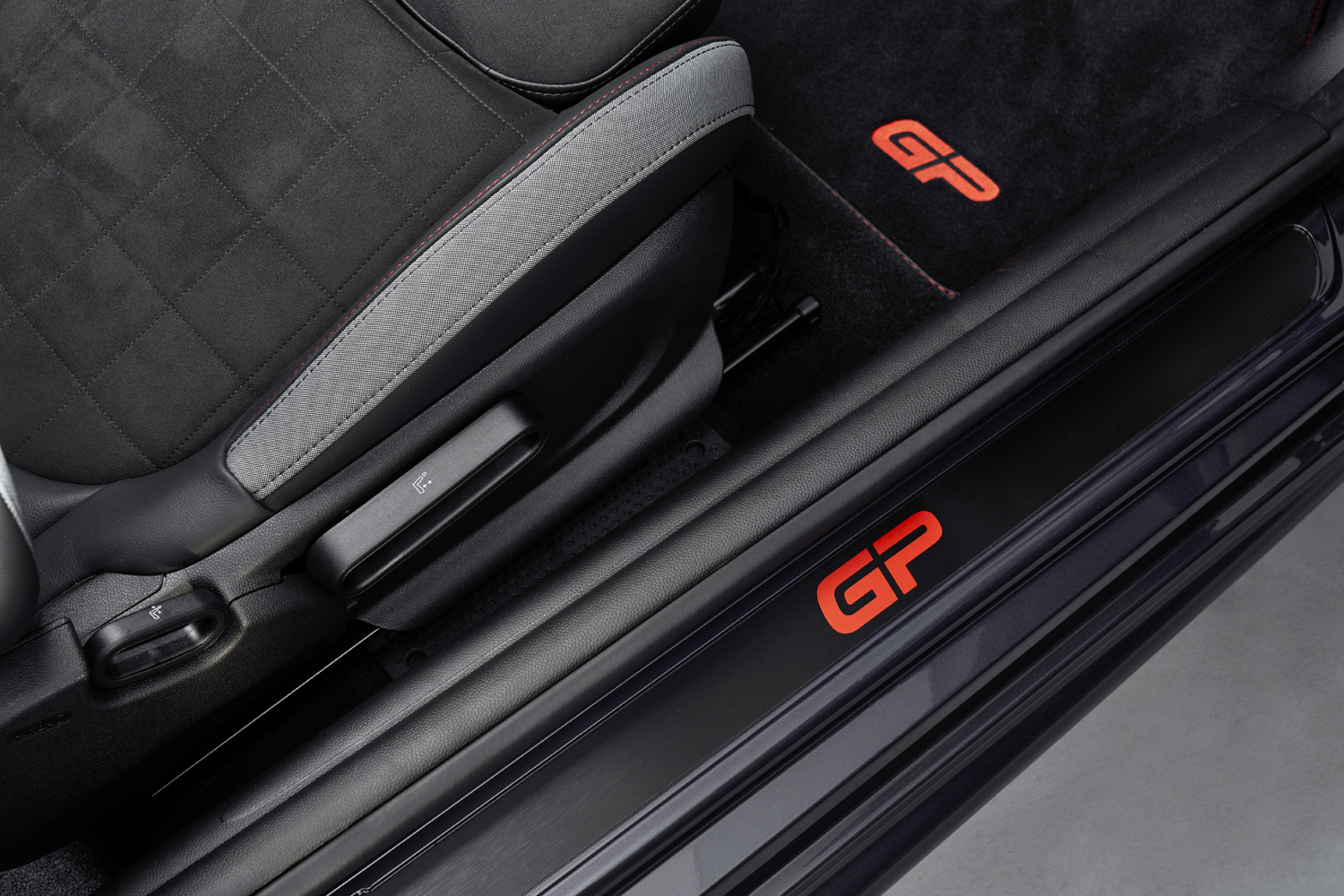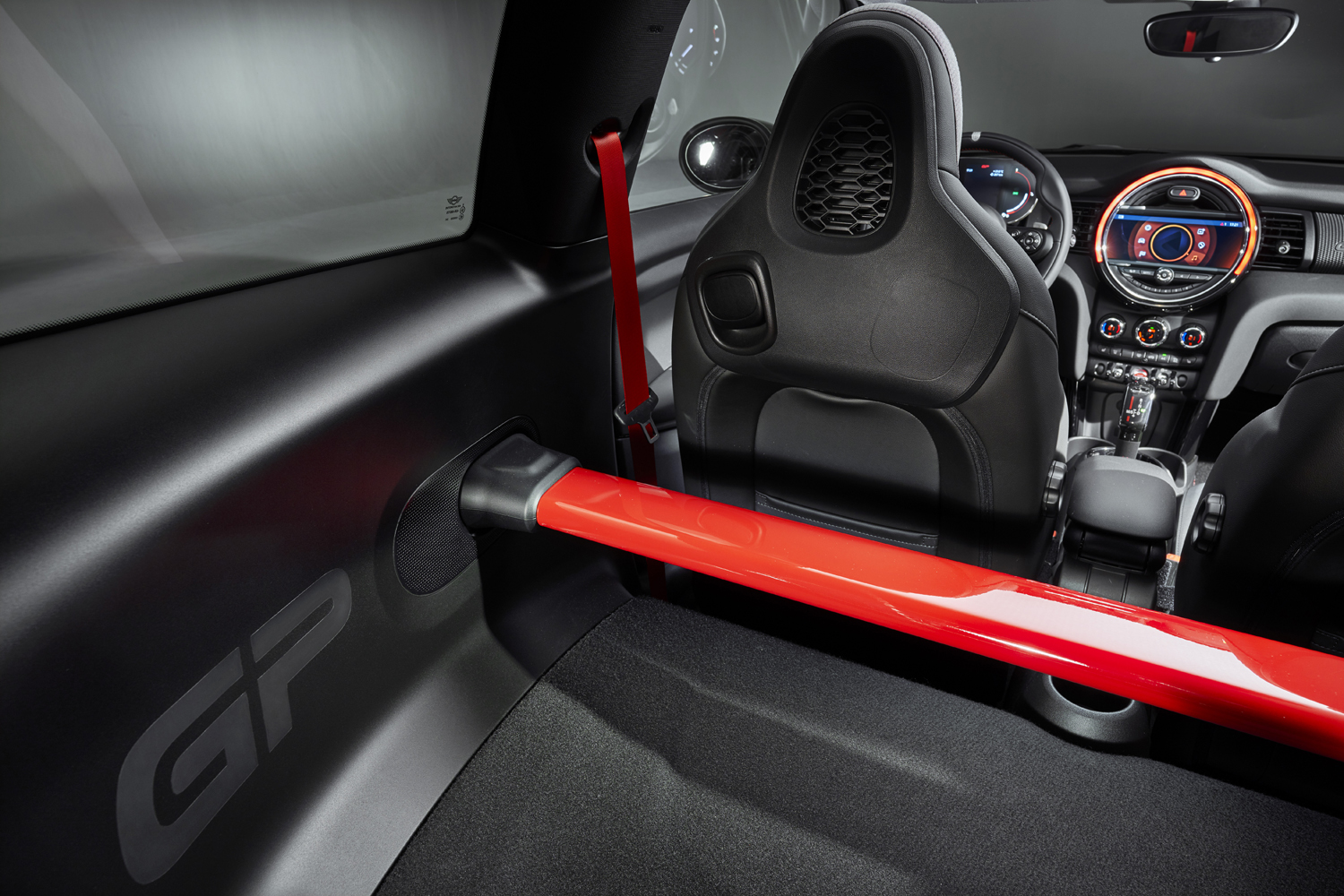Mini planted its flag in the electric car segment when it introduced the Cooper SE, but it’s not leaving the flat-out performance and the go-kart-like handling some of its models are known for behind. The BMW-owned company traveled to the 2019 Los Angeles Auto Show to introduce the John Cooper Works GP, a hot hatch that’s quick, rare, and expensive.
It takes only a quick look at the model to tell it isn’t an ordinary Cooper hatchback. It looks like it has amassed thousands of experience points and evolved, Pokémon-style. The basic body is reminiscent of the Cooper we know and love, but it wears one of the most aggressive body kits we’ve ever seen on England’s favorite city car. The front end receives a deeper front bumper with three air dams, while designers added fender flares with built-in ducts to channel cooling air to the brakes. The hood scoop hints that something powerful lurks between the front wheels.
The back end looks even more extreme than the front, thanks in part to a spoiler the size of a bench in Central Park, and fender flares made using a blend of plastic and carbon fiber. Union Jack tail lamps and a massive emblem on the trunk lid add a finishing touch to the look. The GP is proud of its roots, and it’s ready to rumble.
Enthusiasts will only be able to take one friend along for the ride, because Mini left the rear seats in the parts bin in order to save weight. It reduced the amount of sound-deadening material for the same reason, and to let the two occupants hear the engine’s roar. This is not a quiet place to have a conversation in, so we suggest you explain to your passenger that there are many 3D-printed parts in the cabin before you start the engine. The shift paddles are 3D-printed in metal, as are the 12-o’clock mark on the steering wheel, and the plaque with the car’s serial number that’s affixed to the right side of the dash.
The GP earns the honor of being the most powerful series-produced Mini ever released thanks to a turbocharged, 2.0-liter four-cylinder engine that delivers 306 horsepower and 331 pound-feet of torque. The turbo four spins the front wheels via an eight-speed automatic transmission; you’re out of luck if you want a manual transmission, sadly. The sprint from 0 to 60 mph takes 5.2 seconds, and the Mini continues accelerating until it reaches 165 mph. Brake and suspension improvements ensure it remains stable, even at triple-digit speeds that owners will only legally see on the track.
Launched in 2006 and 2012, respectively, the two previous John Cooper Works GP-badged models were each a massive hit among enthusiasts and collectors. The newest installment in the series is no exception; production is limited to 3,000 examples worldwide, and we’re certain it will sell out fast in spite of a base price pegged at $44,900.
Updated on November 20, 2019: Added full information about the JCW GP.


